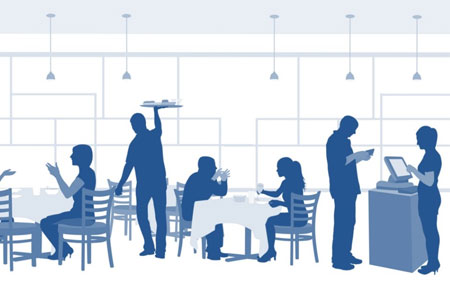THANK YOU FOR SUBSCRIBING
Be first to read the latest tech news, Industry Leader's Insights, and CIO interviews of medium and large enterprises exclusively from Food and Beverage Tech Review
A Chef-Cap for the Robot Please!
Quick-service restaurants have unintentionally appalled their guests due to human errors like time-temperature abuse and contamination of food by touching it.

By
Food and Beverages Tech Review | Friday, July 19, 2019
Stay ahead of the industry with exclusive feature stories on the top companies, expert insights and the latest news delivered straight to your inbox. Subscribe today.
Robots in a restaurant kitchen might sound like a sci-fi movie but technology has elevated food safety at bistros. In the food industry, there are various technological solutions, such as robots and sensors that can replace humans from safety management.
FREMONT, CA: The technology tools like robotics and artificial intelligence, data analytics, and IoT are huge, positive connotations for supply chain management and food safety.
Quick-service restaurants have unintentionally appalled their guests due to human errors like time-temperature abuse and contamination of food by touching it. There have been manifold food safety breaches caused by contaminated produce at restaurants universally.
Automation brings robots that are programmed to perform the same things and giving the restaurant owners a consistency, unlike with human workers. The in-built sensors can detect potential problems instantly that are responsible for food safety breaches, such as coolers rising above a particular temperature and cooking meat at an inappropriate temperature. A burger-flipping robot can avoid cross-contamination by using only sanitized equipment and prepare the burgers at proper temperatures as well.
These innovative developments in the food industry can ease the work of the restaurant owners:
Robots:
Restaurants these days use robots to cook and platter to ensure consistency and adhere to specific food safety protocols every time. Automated tools never touch the raw and cooked proteins, reduce the contamination, and carry out tasks while humans often get inconsistent.
Smart Equipment:
The new coolers, chillers, and ovens comprise of wireless systems that can track and record temperatures mechanically. It is vital to prevent food spoilage and avoid potential food-borne illness outbreaks.
Predictive AI:
AI can be used to analyze supply chain data and spot problems before they cause any massive harm. These futuristic technologies can identify product irregularities and the likely security breaches, and eliminate hazards in the food. The operators should embrace technical solutions, which can locate underlying safety issues early in the processes.
IoT:
The IoT, which is connected to the sensors that transmit a large amount of data, is considered to be a factor that revolutionizes the supply chain. Food businesses can track their products and identify any operational issues better with IoT as well as significantly improve transparency. Sensors are the ones responsible for carefully monitoring products throughout the supply chain life cycle in order to recognize and address the possible food safety issues or distress.
I agree We use cookies on this website to enhance your user experience. By clicking any link on this page you are giving your consent for us to set cookies. More info


However, if you would like to share the information in this article, you may use the link below:
https://www.fbtechrevieweurope.com/news/a-chefcap-for-the-robot-please-nwid-288.html





